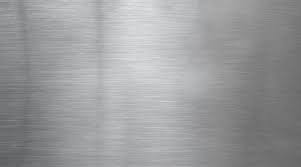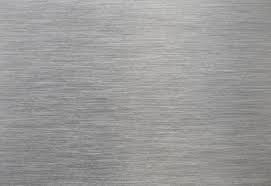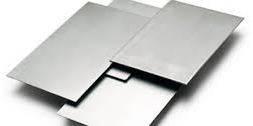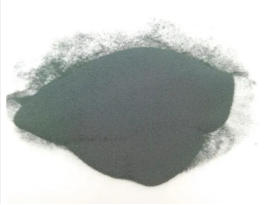- Home
- Products
- Elementary
- Boride Powder
- 3D Printing Powder
- Sulfide Powder
- Oxide Powder
- Carbide powder
- Nitride Powder
- Silicide Powder
- Hydride Powder
- Telluride Powder
- Selenide Powder
- Stearic Acid Series
- Phosphide Powder
- Nanoparticles
- Metal Alloy
- MAX Phase
- Lithium Battery Anode
- Surfactant
- Molecular sieves
- Concrete Admixtures
- News
- Answers
- Contact
- About
News
- 1
- 1
Welding skills of stainless steel composite steel plate
If you are looking for high-quality products, please feel free to contact us and send an inquiry, email: brad@ihpa.net
Overview of stainless steel clad plate
Steel plate is a bimetal plate made of thicker pearlite steel (base) and thinner stainless steel (multilayer). The substrate is mainly carbon steel and low alloy steel, such as Q235, 20, 20g, 20R, 09Mn2, 15MnTi, 16Mn, 16MnR, 14Cr1MoR, 15CrMoRH, etc. The cladding is mostly stainless steel with good corrosion resistance, such as 1Cr18Ni9Ti, 0Cr18Ni9Ti, 1Cr18Ni12Mo2Ti, 0Cr18Ni12Mo2Ti, 1Cr18Ni9, 0Cr13, Cr23Ni28Mo3Cu3Ti, etc.
The welding at the junction of the base layer and the cladding layer of the stainless steel clad plate is dissimilar to steel welding. Its weldability mainly depends on the physical properties, chemical properties, joint form and filler metal type of the cladding and base layers. It often produces high-temperature crystallization cracks, delayed cracks and Embrittlement problems. Welding methods include electrode arc welding, submerged arc welding, CO2 gas shielded welding, etc. At present, argon arc welding is commonly used to weld the cladding and electrode arc welding is used to weld the base layer. In order to ensure that the steel clad plate does not lose its original comprehensive performance, the base layer and the cladding layer must be welded separately; the welding process of the base layer is the same as that of pearlite, the welding process of the cladding layer is similar to that of the corresponding stainless steel, and the dissimilarity at the junction of the base layer and the cladding layer is Metal welding is key.
(3D Printing 304 Stainless Steel Powder)
Preparation before welding
1. Mechanical shearing and cold stamping processing are used When cutting stainless steel clad plates, generally when the total thickness is less than 12mm. During processing, the cladding layer must be downwards and upwards from the base layer, and the surface and joints of the cladding layers must not be damaged. When the layers are thick, plasma cutting (starting from the cladding side) and oxygen-acetylene flame cutting (starting from the base side) can be used. (The oxygen pressure and cutting speed are smaller than those of carbon steel plates of the same thickness, but the cutting nozzle is slightly bigger.)
2. For stainless steel forming, cold bending at room temperature should be carried out as much as possible. Sharp bending should not be performed on a rolling machine or press. It should be processed slowly step by step. If hot processing is required, the surface of the workpiece must first be cleaned of oil and impurities. Use weakly oxidizing hot workpieces to prevent carburization; the low-carbon steel substrate can be air-cooled, and the low-alloy steel substrate must be thermally insulated and slowly cooled. The heating temperature is 700~850℃.
3. Bevel production. When making bevels, thin parts can usually use I-shaped grooves, and thicker parts can use V-shaped, U-shaped, X-shaped, V-shaped and U-shaped combined grooves. Generally, X-shaped groove double-sided welding is used as much as possible. The base layer is welded first, then the transition layer is welded, and finally the cladding layer is welded to ensure that the welded joint has better corrosion resistance. When the welding position is limited and only single-sided welding can be used, a V-shaped groove can be used to weld the cladding layer first, then the transition layer, and finally the base layer. During welding, try to prevent the base layer from being melted into the cladding layer.
4. Selection of welding materials for stainless steel clad plates. When the thickness of the clad plate is less than 25mm, the base layer can also use A302 electrodes (higher stress); when the clad plate is larger than 25mm, a transition layer can be welded with pure iron electrodes first. Then, use steel welding rods to weld the base layer. Commonly used welding materials are selected as shown below:

Welding operation
1. The welding sequence of stainless steel composite steel is generally: first weld the base layer, then weld the transition layer, and finally weld the cladding layer to ensure that the welded joint has good corrosion resistance. At the same time, the welding characteristics of the transition layer should also be considered to minimize the cladding layer. Amount of welding work on one side.
2. Regardless of whether the cladding layer is inside or outside the corner joint, the base layer must be welded first. When the cladding is located on the inside, the base layer welding roots should be cleaned from the inner corner before welding the cladding; when the cladding is on the outside, the last weld pass of the base layer should be polished. When welding the cladding, the transition layer can be welded first or directly welding the cladding depending on the thickness of the stainless steel clad plate.
3. Since the carbon diffusion process occurs in the transition layer at high temperatures, a high-hardness carbonization zone and a low-hardness decarburization zone are formed in the junction area, making the transition layer form a complex metallographic structure and increasing the difficulty of welding. Therefore, in order to prevent the first layer of base weld from melting into austenite, part of the clad metal near the joint can be processed in advance.
4. Weld the base layer first. The first base layer weld should not penetrate into the cladding layer to prevent the weld metal from embrittlement or cracking. When welding the base layer steel, the conventional welding current for the base layer should still be used. After the base layer is welded, use carbon arc gouging, shoveling, grinding and other methods to clean the welding root. If the requirements are high, the transition layer can only be welded after passing X-ray flaw detection.
5. Transition layer welding, in order to reduce the dilution rate of the base metal to the weld, the welding current should be as small as possible while ensuring penetration; to use small diameter welding rods and narrow weld beads, the base weld must be covered and cut higher than The base layer is 1mm, and the welding seam must be smooth and not convex. Otherwise, it must be polished off.

6. When welding small-diameter stainless steel composite steel pipes, the first layer of welding should be tungsten arc welding, and the second layer can be welded with austenitic stainless steel electrodes.
7. For high-pressure vessels made of large-thickness stainless steel clad plates, the internal stainless steel composite layer is welded first during the welding process. A ferrite transition layer is welded, and finally the base weld is filled with low-alloy steel electrodes.
8. When selecting structural materials according to working conditions, the diffusion layer in the fusion zone of austenitic weld and pearlitic steel should be reduced to a minimum. This
It is especially important for components working in high temperature and corrosive media and large components that need to be tempered after welding.
9. During operation, attention should be paid to protecting the cladding surface of non-welded parts to prevent arc scratches. The base weld should leave a suitable depth for the transition layer, which is generally about 2mm away from the cladding.
Post-weld treatment
For welded joints of stainless steel composite steel, neither solid solution nor stress relief treatment is generally performed on the cladding. However, intermediate annealing and stress relief treatment are often used for extremely thick weldments. The heat treatment to eliminate residual stress is best carried out after the base layer is welded. After the heat treatment, the transition layer and cladding layer are welded. If the overall heat treatment is required, the temperature should be selected. Considering the impact on the corrosion resistance of the cladding, the unevenness of the transition layer and the differences in physical properties of dissimilar steels, the temperature is generally 450~650℃.
Common post-weld treatment methods for stainless steel composite steel include annealing, shot peening, and stress relief using deformation methods.

Supplier
TRUNNANO is a supplier of with over 12 years experience in nano-building energy conservation and nanotechnology development. It accepts payment via Credit Card, T/T, West Union and Paypal. Trunnano will ship the goods to customers overseas through FedEx, DHL, by air, or by sea. If you are looking for high-quality sodium gluconate please feel free to contact us and send an inquiry.
Inquiry us
PREVIOUS NEWS
building materials industry indispensable good material
NEXT NEWS
